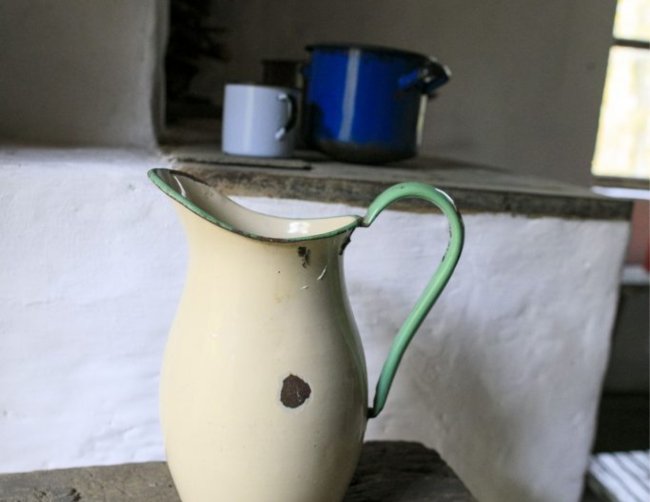Object
Pitcher
Information
Copyright classification
https://pl.wikipedia.org/wiki/Domena_publiczna
Description
In the Gypsy settlement in the Sądecki Ethnographic Park, in one of the khers (houses), a water jug was placed on a small wooden stool next to the stove "for a moment". An enamelled vessel with a green handle is covered with a cloth that was used to wipe away accidentally spilled drops. Such a jug had many uses, just like modern jugs and pots from our homes, but among the Roma, the use of these vessels was conditioned by the moral code.
The Roma followed the rule not to use dishes for both cooking and washing. One was always used only for preparing meals, while the other was used only for washing and cleaning. Mixing them was strictly forbidden. In this way, each Roma family should have at least three bowls - one for washing food, another for washing and washing for men, and the third for women. It was not possible to wash men's and women's underwear in one vessel. Similarly, it was forbidden to obtain water for cooking and drinking from a pond where there was standing water in which other people could bathe.
This rule was related to the unwritten code of Romani customs - Mageripen. According to him, the preparation of meals involved great attention to hygiene. Jerzy Ficowski noticed that these activities were performed with great care, sometimes resembling ceremonial and ritual behavior. For example, a hen prepared for eating was scalded in one vessel and then washed several times, centimeter by centimeter, in several subsequent ones. After completing these activities, the dishes were thoroughly scrubbed, almost to a shine.
The Code of Romani Customs regulated the lives of the Roma in many areas. It defined, among others: what could and what could not be consumed. The Roma could not eat horse and dog meat. However, the most frequently consumed meat dishes included the previously mentioned chicken and its broth, as well as hedgehog meat. It should be noted here that not all hedgehogs were suitable for consumption. According to the Romani, there were two species of hedgehog - with a dog's face - "spiny dog" and "with a pig's snout" - "spiny pig". Only the latter type of animal was suitable for consumption.
The briefly described code was followed by the Gypsy tribes inhabiting Poland, of which the lowland Gypsies called "Polish Roma" observed it most strictly.
Kamil Basta


